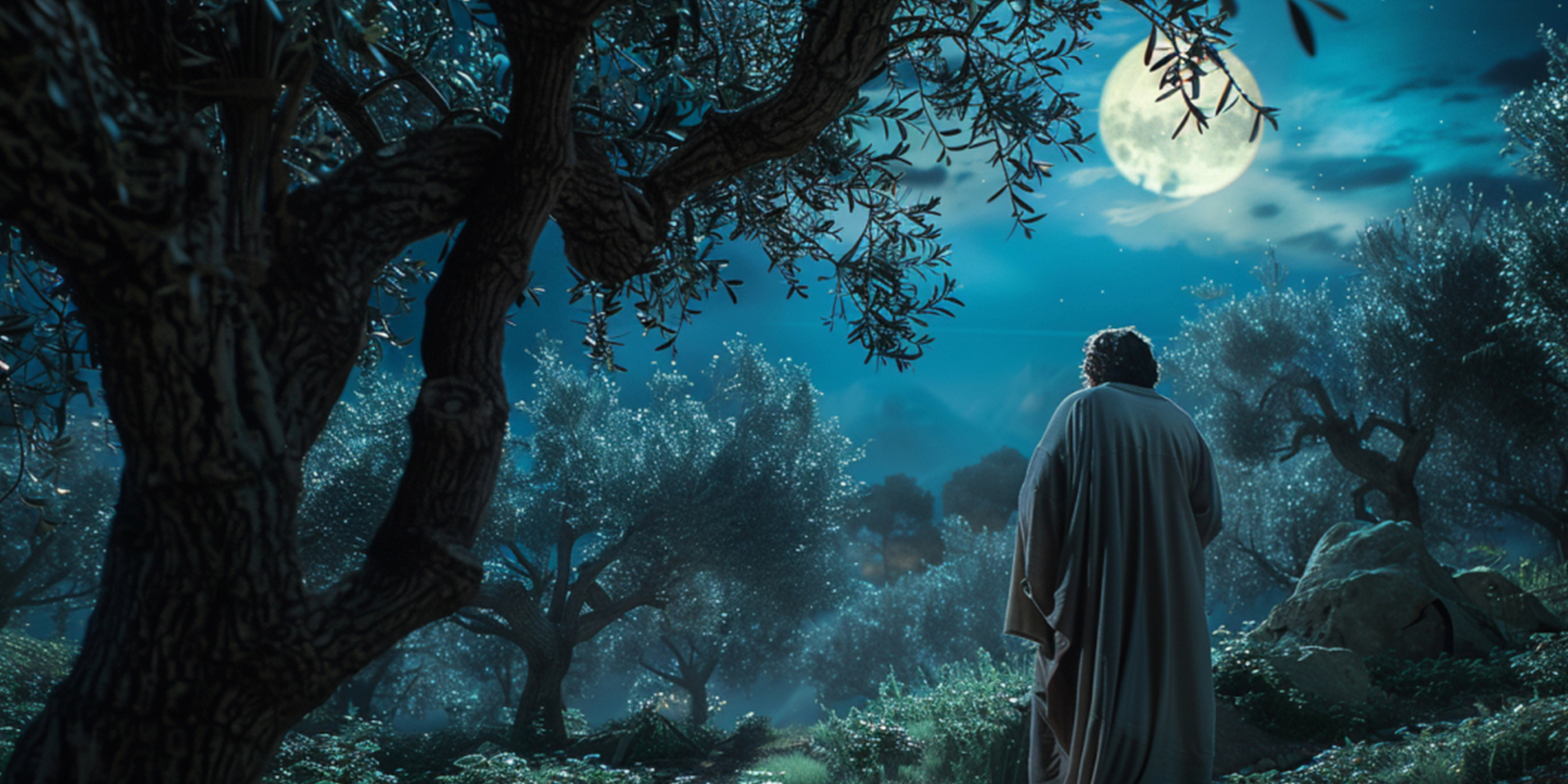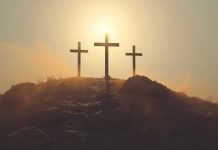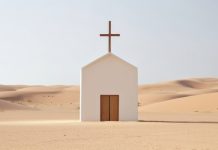As soon as the tourists leave the land of the silent agony of Gethsemane, their lives return to normal, and the garden where the Son of God sobbed in indescribable pain, misunderstood and unsupported even by His closest disciples, sinks back into oblivion.
The Garden of Gethsemane remains one of the most popular tourist sites in the Holy Land. But what significance can the agony suffered by the Saviour in the “olive press” still have today?
Visitors gaze pensively at the thousand-year-old olive trees that shade Jesus’s former battlefield. Some may try to identify where the disciples fell asleep and where Christ prayed. But this miracle lasts only a few minutes, as long as the people are in the secular enclosure. Visitors to the garden today seem to be affected by the drowsiness and contagious loss of consciousness of the disciples of old.
The site of the unknown battle
The Garden of Gethsemane lies on the western slope of the Mount of Olives. Its name is the Greek transliteration of the Aramaic phrase Gath Shemanim, meaning “olive press”. This name probably comes from an olive press that once stood in the area. The Evangelist John (18:8) used the word “garden” to identify this place, which may have belonged to one of the Saviour’s disciples or close associates, since it had become His favourite place for meditation and prayer.
The exact location of the garden in biblical times is not known. This tranquil place was probably located somewhere at the foot of the Mount of Olives, just across the Kidron Valley from the Temple and about ten minutes from the city. The place that is usually shown to visitors today is based on a tradition that cannot be traced in history before the days of Constantine the Great, three centuries after Christ. Thus, the Garden of Gethsemane is located at the bottom of the climb, just east of the road through Stephen’s Gate and the bridge over the Kidron Valley. According to many commentators and travellers to Palestine, the original Gethsemane was slightly higher up the slope.
Today, the site is divided into three properties belonging to the Roman Catholic, Orthodox, and Armenian churches. The olive trees that cover the site are very old, but certainly none of them witnessed the agony of the Saviour. In any case, the Roman general Titus felled and used all the trees around Jerusalem during his siege in 70 AD (cf. Flavius Josephus, The Wars of the Jews, 12, 4). Early Christian pilgrims who visited the site lamented the lack of olive trees in the Garden of Gethsemane. Even if it is not certain that the place where the Saviour prayed is the present Garden of Gethsemane, it must have been somewhere very close.
On the mountain to pray
The most important part of the episode in the Garden of Gethsemane is the prayer that Jesus made there, a prayer that marked a turning point in the economy of the universal conflict between good and evil, God and Satan. It was a prayer that decided the immediate and eternal consequences of that conflict. Jesus and His disciples left the upper room of Mary’s house in Jerusalem, where they had taken part in the Passover meal, to retire to a place of prayer in solitude. At the entrance to the garden the group paused while the Saviour invited the apostles Peter, James and John to accompany Him a little further, where He would pray in their presence. Christ’s heart was filled with deep existential anguish and He felt the need for the support of close friends.
Only a few hours before, Peter had made the most solemn declarations of his determination to remain faithful to the Master, only to find how unprepared he was for the challenge and the role he had assumed. Three times the Saviour came to the place where he had left the three, only to find them sleeping instead of keeping watch. Jesus used the occasion to point out some important details about the role and content of prayer and the need for perseverance in daily devotional life. “Watch and pray so that you will not fall into temptation. The spirit is willing, but the flesh is weak,” He said to them (Matthew 26:41), indicating that temptation can be overcome through prayer. Not only the episode in Gethsemane, but the whole of Jesus’s ministry illustrates the importance of daily prayer and a constant connection with God. Although He was the Son of God, Jesus maintained an ongoing relationship with His Father.
The essential passage to the cross
Gethsemane is the essential passage to the cross on Calvary. Jesus reveals Himself to the few witnesses of this scene as a suffering Servant of the Lord. The Son of Man seems far from the future glory associated with the Second Coming and anxious about His fate. While during His Messianic ministry He was always concerned for the wellbeing of others; in the last moments before His death, He was overcome by the anguish of separation from God the Father as a result of the guilt of all humanity which He had taken upon Himself. Not long before, during supper with His disciples, Jesus had spoken of His coming on the clouds of heaven: “At that time people will see the Son of Man coming in clouds with great power and glory” (Mark 13:26). Yet, as He falls to the ground in the darkness of Gethsemane, the Son of Man seems so uncertain of His earlier prophetic words. The episode in the Garden of Olives is a source of insight into the complex relationship between sorrow and salvation, between anguish and the divine Son’s approach to the salvation of sinners.
The Christian author Ellen White captured very well the need of the man Christ to be supported in the face of death: “As the substitute and surety for sinful man, Christ was suffering under divine justice. He saw what justice meant. Hitherto He had been as an intercessor for others; now He longed to have an intercessor for Himself.”[1] “Then He said to them, ‘My soul is overwhelmed with sorrow to the point of death. Stay here and keep watch with me'” (Matthew 26:38). Under the immense weight of the guilt of all the sins of the world, no one could understand or support Him. At that time, the disciples had no idea of the depth and implications of the suffering of which their Master was speaking. Much later, after the death and resurrection of Jesus, when they understood better the meaning of Christ’s coming into this world, they understood more clearly what Jesus had meant that evening.
Gethsemane becomes the place of full confirmation of His human nature, subject to the same temptations and trials as any other human being. The episode in the garden, under the sleepy gaze of the disciples—the only human witnesses to the ordeal of His soul—is important in the chronology of the Gospels because it confirms the humanity of the One who was to die on the wood of the Cross. Without a proper understanding of human nature, with all its frailties, the sacrifice of Calvary might have seemed merely a gesture of divine good will towards sinners, resolved by the unlimited power of an almighty and infinite God. Jesus experiences fear, grief, and pain. This is an important lesson for any Christian facing fears and doubts. Jesus does not hide His pain, but confesses it, accepts it, confronts it, and overcomes it by accepting (absurdly from a human point of view) the absolute will of God.
The will of the Father
The fact that Jesus accepted the sacrifice as the fulfilment of the Father’s will did not mean that the Father wanted His Son to die.[2] It was never God’s will that the righteous and innocent should suffer or that martyrs should be killed. From Thecla to Dietrich Bonhoeffer, or even to the Christians persecuted and killed for their faith today, God did not want anyone to suffer and die. But sin is punishable by death (Romans 6:23), and in order for humanity to have a real chance of eternal life, the Father accepted the role of mediator and atoner that His Son willingly took on. The prayer of Jesus was not a fatalistic resignation to the divine will, but rather a firm trust in God the Father in spite of adverse circumstances. In accepting to do the Father’s will, Jesus Christ did not so much experience a sense of surrender in the face of an implacable plan, but rather expressed His profound agreement with the painful task of saving the human race.
Suffering to the point of blood
The agony and inner turmoil of Jesus were so intense that, as the Evangelist Luke recalls, His sweat was mixed with blood (Luke 22:44). In 1986, the Journal of the American Medical Association published an article entitled “On the Physical Death of Jesus Christ”, in which the authors argued that the phenomenon of bleeding through sweat, known as “hematohidrosis”, was possible in Jesus. It is a phenomenon that can occur under conditions of emotional instability, very strong emotions, and so on. A recent article in The Indian Journal of Dermatology by H.R. Jerajani et al. is a suitable case report to explain the phenomenon of sweating with blood, which is considered to be a rare clinical case and of a psychological rather than a physical nature. These data confirm that the main source of the Saviour’s agony in Gethsemane was His spiritual struggle.
The presence of blood in Jesus’s agony gives new meaning to the struggles of His soul. John the Baptist had proclaimed Him three years earlier as the Lamb of God who takes away the sin of the world (John 1:29, 36), making it clear that the Lamb could be none other than the One whom God had destined to sacrifice Himself to atone for the sins of His people and of all mankind.The image of blood dripping on the garden floor leads to the idea of sacrifice throughout the Old Testament system, foreshadowing the Messiah.
The mystery of the divine sigh
In the cold solitude of the Garden of Gethsemane, a mystery still lurks. In the almost two thousand years since then, our knowledge has not advanced much in this area. There are still many misunderstandings about Christ’s passion. Just as the struggle of the Saviour as He fell to the ground in agony was not exciting enough for the sleeping disciples at that time, there is not much interest in it today.
Gethsemane and Calvary are linked by the emerging pain of the Son of God. While in the Garden Christ chose to go all the way in the saga of our salvation, the path of suffering and crucifixion confirmed the fulfilment of the choice made and the victory. If, as the Apostle Paul wrote, Jesus Christ is a second Adam, one could say that the Garden of Gethsemane is a second Garden of Eden. Adam, the first man, transgressed the divine command in the Garden of Eden and brought death upon mankind. Jesus overcame temptation for the salvation of mankind and achieved this victory in a garden. Adam began his life in the Garden of Eden, while Jesus reached the end of his earthly life in the Garden of Gethsemane. Whereas in Eden Adam hid after his sin, in Gethsemane Jesus overcame temptation and then went out to meet those who had come to arrest Him.
In Eden, the voice of the Lord sought the hidden man. In the Garden of the Divine Sighs, the solitary cries of the Son of God was the price of the redeemed man’s return to the Garden, transfigured and prepared for future glory. Until then, every man must pass through the place of subduing his natural desires, of resisting temptation, and of saying to God: “Your will be done.” It is the only way to the cross of Christ, to salvation and eternal life.


















